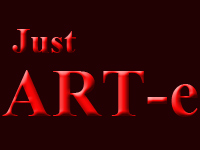born. 1965, Freetown, Sierra Leone
lives Melbourne, Australia
Patricia Piccinini arrived in Australia in 1972 with her family. She initially studied economic history before enrolling at art school in Melbourne. Since 1991 her work has been exhibited around the world, including the Berlin Biennale 2001 and in Songs of the Earth in Kassell, in 2000.
Piccinini works in a variety of media, including painting, sculpture, video, sound, installation and digital prints. She enjoys exploring what she calls‘the often specious distinctions between the artificial and the natural’. The concepts that underpin modern science, such as genetic engineering and other forms of biotechnology, appear to fascinate her.
The Mutant Genome Project (TMGP) (1994), used computer software to develop LUMP (Lifeform with Unevolved Mutant Properties), a virtual hybrid ‘creature’. The artist has said that ‘LUMP is part human flesh, biotechnology, popular culture and marketing; unlovable to some, but the apple of its mother’s eye’. LUMP is a ‘baby’ born from a perverse coupling of television advertising and basic engineering principles. This shiny, plastic infant again features in the computer generated photographic work, Psychotourism (1996), in which it is sheltered and protected by its human, although digitally enhanced, ‘mother’. Other virtual creatures appear in Social Studies (2000) and Plasticology, the multi-screen installation featured in the 1999 Melbourne International Biennial (1999) and Sydney’s 1997 Perspecta. Piccinini’s vaguely embryonic invented forms are simultaneously attractive and repellent.
An ambivalent and perhaps weird coupling can be seen again in Car Nuggets: They’re good for you (1998) and Truck Babies (1999). The latter are cute, compressed and streamlined road machines in shiny pastel pink and baby blue fibreglass. From a similar spawning comes Car Nuggets. ForPiccinini these forms are something of a nostalgic return. They refer not only to the vagaries of industrial mass production processes but also to the heady days of adolescence where the car and car parts symbolised a potent lexicon of desires. In the 2001 GL versions she has decorated these strange fragments with flame and skull details.
Piccinini enjoys the fictions and mutability of the ideas of perfection. The contrasts and relationships that exist between the natural, organic and constructed worlds suggest to her the potential of the marriage of human physiology and technological development. |
